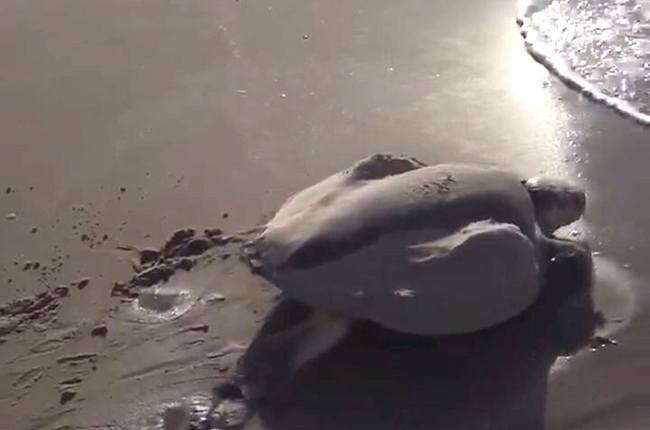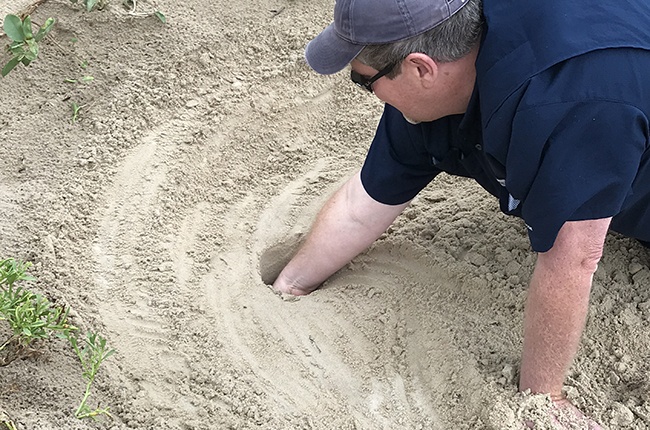
It was a beautiful sunny day along beach, when volunteers from the Sea Turtle Patrol spotted the unmistakable tracks. Two small parallel footprints with a line in the sand between the footprints, all heading inland from the water meant a mother Kemp’s ridley had nested nearby. The Sea Turtle Patrol volunteers, knew exactly what to do; they guarded the nest and assisted the sea turtle responders in collecting the data and the nest.
The Upper Texas Coast Sea Turtle Patrol is a partnership of Dr. Christopher Marshall, Professor of Marine Biology and Wildlife and Fisheries Sciences at Texas A&M University at Galveston, and Joanie Steinhaus Director of the Turtle Island Restoration Network.
Kemp’s ridley sea turtles are the most common sea turtle in Texas marine waters; they are also unfortunately the most endangered sea turtle in the world. They only occur in this region of the Gulf of Mexico and span the border between the U.S. and Mexico. The Sea Turtle Patrol monitors Texas beaches from April 1 to July 15 each year for nesting turtles.

The two nests were discovered just north of Surfside Beach, Texas last Friday, May 11. “It’s a bit late in the year for discovering the first nests,” said Marshall. “Our Sea Turtle Patrol volunteers have been anxiously awaiting the return of Kemp’s ridley sea turtles to the Upper Texas Coast. The prolonged spring and cool ocean waters in the area are likely responsible for their delay.”
Once sea turtle tracks are spotted by patrollers, responders locate and excavate the nests, which are then translocated to protected incubation facilities on the Padre Island National Seashore. This facility allows biologists to control the sex of sea turtle hatchlings, which is temperature dependent, as well as increase the hatching success rate of sea turtles. Due to their critically-endangered status, every egg counts for this population.
The Upper Texas Coast Sea Turtle Patrol is just one of several patrol organizations that span the entire Texas coast. It is part of a state-wide effort run by Dr. Donna Shaver, the director of the Sea Turtle Science and Recovery Division of the Padre Island National Seashore. All partners work in collaboration with the National Park Service, U.S. Fish & Wildlife Service, National Oceanic Atmospheric Administration (NOAA) Fisheries and the Texas Parks and Wildlife Department.
Funding of the Upper Texas Coast Sea Turtle Patrol is provided as part of the Deepwater Horizon natural resource damage assessment settlement from the state and federal natural resource trustees, which include the Texas Parks and Wildlife Department, the Texas Commission on Environmental Quality, the Texas General Land Office, the U.S. Department of the Interior and NOAA.
###
Media contact: Bob Wright, Marketing and Communications, Texas A&M University at Galveston. Office: 409-740-4840, Cell: 713-586-9870 Email: WrightB@TAMUG.edu.





